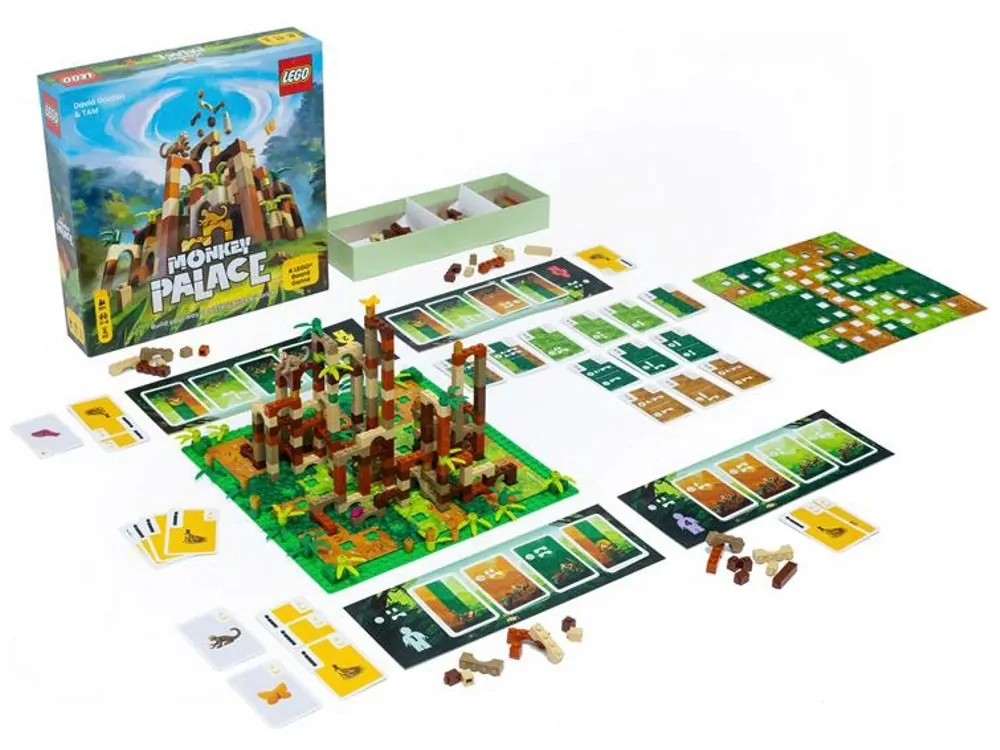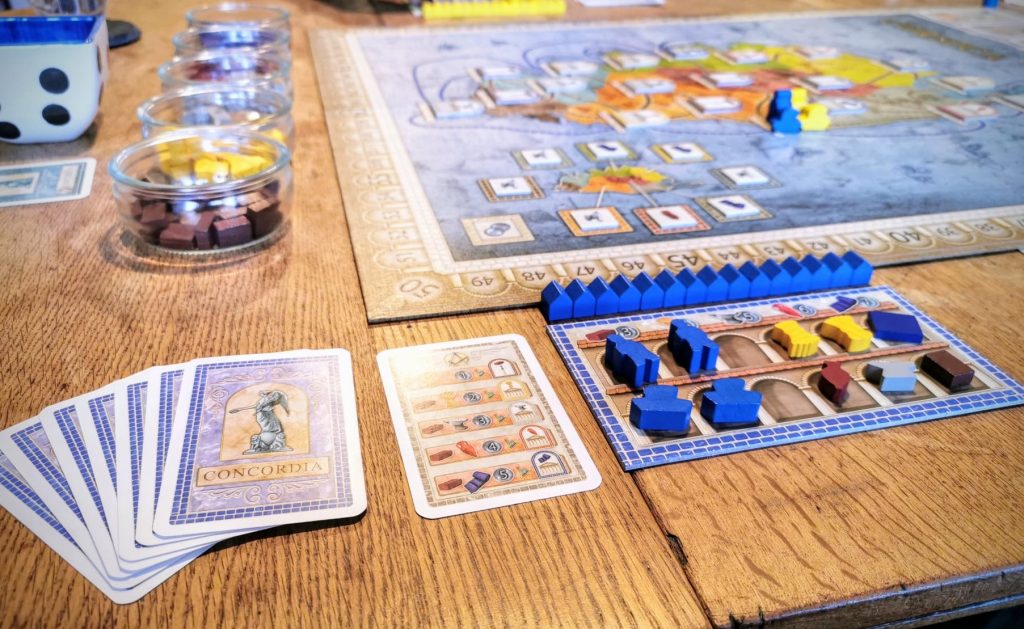Five board game mechanics that would translate perfectly to LEGO
As the LEGO Group and Asmodee announce a ‘multi-year partnership’, here are five classic board game mechanics that would translate perfectly to bricks.
According to Statista, the international board game market is projected to total $8.6bn revenue in 2024. That’s only a fraction of the toy market, which is expected to top out at $129.5bn, but it’s still not chump change – and it’s presumably for that reason that the LEGO Group is returning to the realm of tabletop gaming through a partnership with board game publisher Asmodee.
Responsible for publishing titles including Catan, Codenames, Carcassonne and Ticket to Ride, Asmodee is one of the biggest names in the board gaming space right now. And the LEGO Group is embarking on a ‘multi-year’ partnership with the company to produce a string of board games, starting with this year’s Monkey Palace and a forthcoming family party game titled Brick Like This.

But while party games and family titles seem like an obvious first step for LEGO board games, the company will likely very quickly discover that there’s a global community of dedicated adult board gamers out there – just as it has done with its 18+ LEGO sets. It’s within that scope for more complex games that the LEGO Group and Asmodee would do well to embrace some of the deeper mechanics found within the most popular board games around.
Some of these mechanics would fit just as well into a lighter family game, of course, but it would be really interesting to see the two companies tap into the deeper well of hobbyists just waiting for a LEGO game to appeal to them. Check out the five mechanics we’d love to see implemented into a LEGO board game below.
5 – Modular boards

Maybe the most obvious board game mechanic for a LEGO game is the idea of a modular board, which the LEGO Group and Asmodee are embracing to a degree with Monkey Palace (you can build on top of the board). The Quest for El Dorado has an especially neat interpretation of this concept, as you race to the end of the map but build it as you go, which would translate really nicely to LEGO bricks (you’re literally assembling the map as you play the game).
Co-op games like Sub Terra and Betrayal at House on the Hill offer a different take on the same mechanic, which is geared around exploration during play – on your turn you’ll choose where to explore next within a cave or haunted house, adding a new section to the board as you discover it – and could be another fun way to implement a buildable board within a LEGO game.
4 – Worker placement

Building with bricks is really only one half of the LEGO experience, especially within licensed themes. The other revolves around minifigures, which in product ranges like Star Wars and Marvel are often enough to justify a purchase all on their own. And what better way to put those tiny plastic people front and centre in a board game than by incorporating a worker placement mechanic?
Popularised by titles including Agricola and Stone Age, worker placement is core to literally thousands of board games at this point, and involves players claiming action spaces on the board using a limited pool of meeples. Toss what would traditionally be wooden figures in favour of minifigures and you’ve got a LEGO game going. You could even mix and match minifigure parts to give your workers different abilities if you’re looking for an extra layer of complexity.
3 – Push your luck

Basically what it says on the tin, this mechanic is all about seeing how far you can push your actions within a game before overreaching and failing. The decision space is then consumed by a notion familiar to gamblers: do you settle for what you’ve got, or risk it all for a little more? Blackjack is the quintessential example of a push your luck game, but more inventive implementations can be found in titles like The Quacks of Quedlinburg and Deep Sea Adventure.
In the latter game, for example, you’ll have to choose how deeply to dive for undersea treasure while making use of a communal oxygen tank. If other players delve too deeply, or too greedily, you’ll risk running out of air before returning to the surface. This could be realised within a LEGO board game through the lens of a dexterity game – how tall can you build a structure before it collapses? – or by removing bricks from a common resource total, for example.
2 – Deck building

A mechanic that has ‘building’ in the name sounds like a sure-fire win for a LEGO game from the off, but anyone familiar with board games will know that deck building typically concerns cards. You’ll start with a default hand that usually contains some weaker starting cards, and as things progress it often becomes a game of managing your deck, choosing which cards to abandon in favour of more powerful cards, and so on.
Classic examples of deck builders include Dominion, Concordia and Great Western Trail, all of which implement the mechanic in different and interesting ways. A LEGO game could settle on adding cards to other brick-based mechanics, but it could also literally swap cards for a library of LEGO elements that have different powers and values. Managing your collection of resources sounds like an appropriate task for a LEGO game, after all.
1 – Set collection

Games like Sushi! Go, Ticket to Ride and Jaipur have all mastered the art of set collection, a mechanic so intertwined with the modern-day ethos of LEGO that the term itself is interchangeable between both hobbies. Within board games, it refers to collecting matching sets of cards or resources to score more points or execute actions, such as collecting matching colour cards to build new routes in Ticket to Ride.
A LEGO board game could take advantage of the set collection mechanic in a bunch of different ways. One could simply be collecting matching resources, such as specific LEGO elements – maybe you need to pick up five unique 2×2 tiles to progress to the next phase – but a more interesting implementation would be collecting all the pieces you need to build a mini model that unlocks a new action, achieves a specific goal or gives your character new abilities.
The LEGO Group has tried its hand at board games before, but this is the first time it’s partnered with a publisher in the industry, giving whatever titles might come our way next a little more weight among the wider board game community (which is perhaps the point). Whatever happens, the possibilities for leaning a little deeper into the mechanics of modern board games are pretty much limitless.
Support the work that Brick Fanatics does by purchasing your LEGO using our affiliate links. Thanks!
Author Profile
- I like to think of myself as a journalist first, LEGO fan second, but we all know that’s not really the case. Journalism does run through my veins, though, like some kind of weird literary blood – the sort that will no doubt one day lead to a stress-induced heart malfunction. It’s like smoking, only worse. Thankfully, I get to write about LEGO until then.
Latest entries
 Best Deal09/09/2024Trio of retiring LEGO Harry Potter Hogwarts Castle sets discounted – for now
Best Deal09/09/2024Trio of retiring LEGO Harry Potter Hogwarts Castle sets discounted – for now News09/09/2024LEGO accidentally replaces Harry Potter freebie with unreleased set
News09/09/2024LEGO accidentally replaces Harry Potter freebie with unreleased set News09/09/2024LEGO cuts modular building shelf life short, but extends botanicals
News09/09/2024LEGO cuts modular building shelf life short, but extends botanicals 71047 Dungeons & Dragons06/09/2024LEGO Dungeons & Dragons walkthrough: Strahd von Zarovich and Halfling Druid
71047 Dungeons & Dragons06/09/2024LEGO Dungeons & Dragons walkthrough: Strahd von Zarovich and Halfling Druid




I would have thought games with literal building mechanics were the obvious ones. think Santorini, Photosynthesis or Skyline
This partnership legitimately excites me and I hope Asmodee do it justice with some slightly higher complexity level games in the future that are, as you noted in the introduction, more suited for your adult (and advanced younger) board game afficinados.